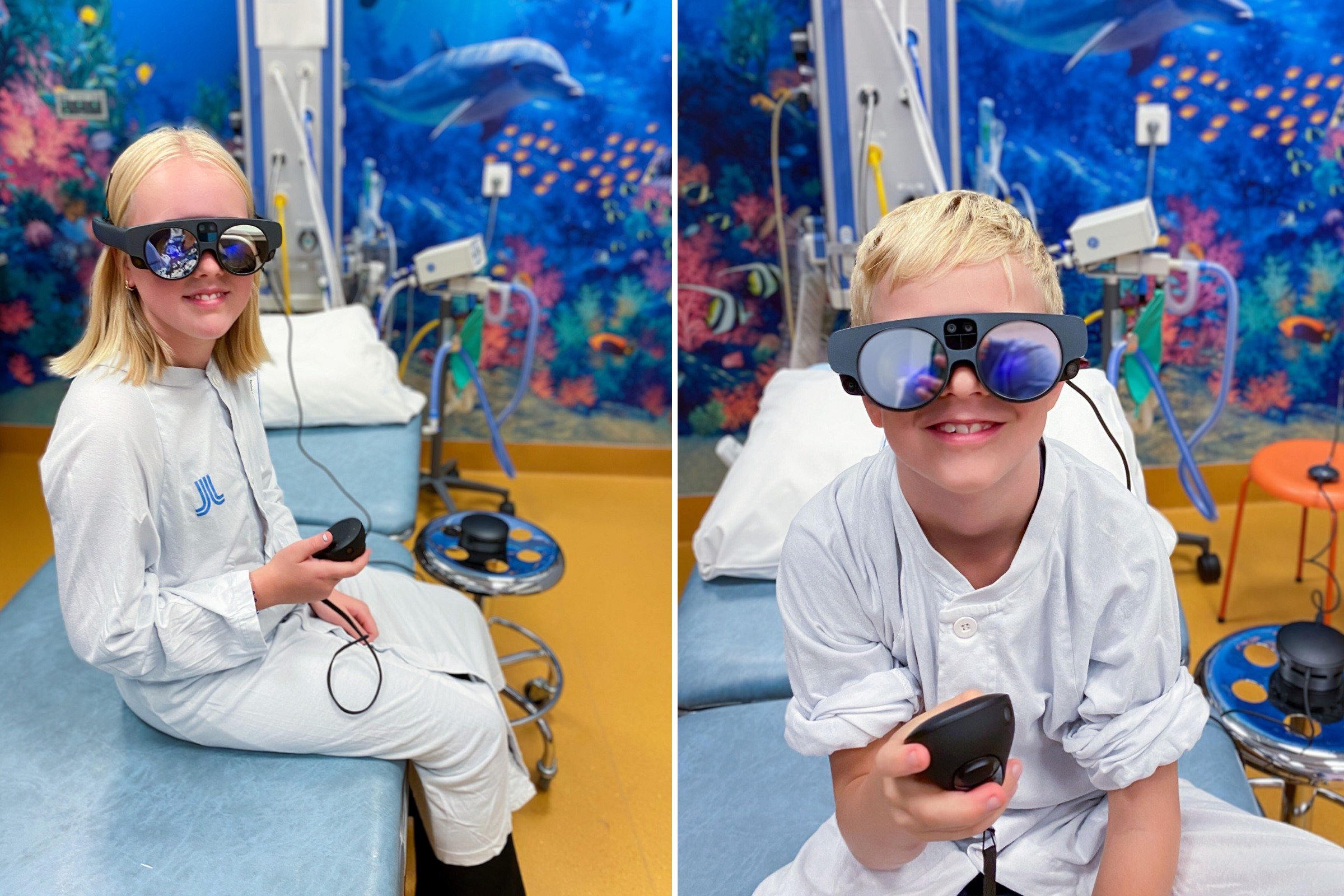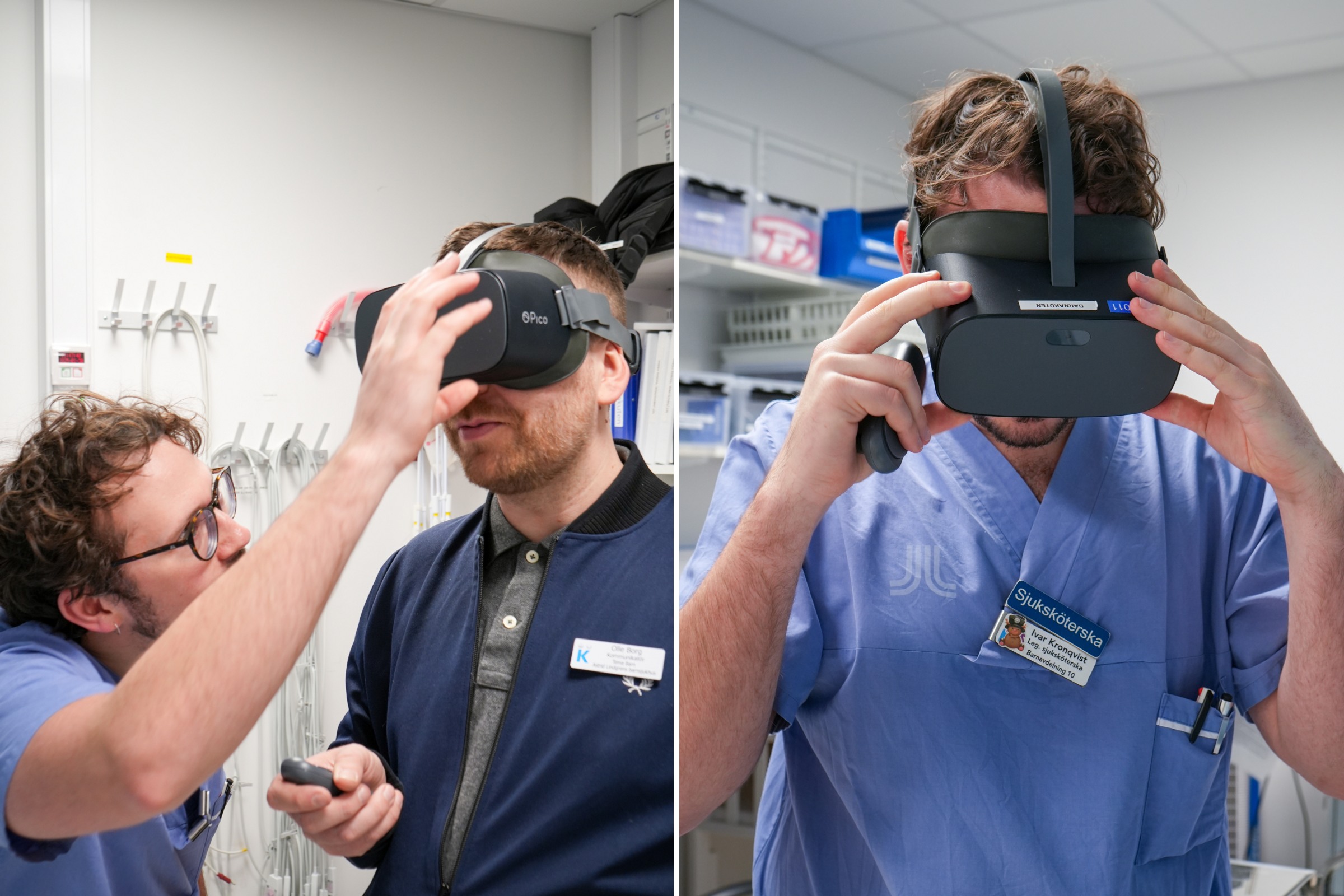How virtual reality and augmented reality are reducing pain and anxiety in pediatric patients

Innovation meets compassion in pediatric healthcare
At Astrid Lindgren Children’s Hospital, a part of Karolinska University hospital in Sweden, healthcare innovation isn’t just about new technology — it’s about creating a gentler, person-centred and more empowering experience for children. One of the hospital’s most exciting developments is the use of Extended Reality (XR)—which includes both Virtual Reality (VR) and Augmented Reality (AR)—to reduce pain, fear, and anxiety in pediatric patients undergoing medical procedures.
Virtual reality (VR) for pain management in children
Whether it’s a routine blood draw or a more complex procedure, hospital visits can be distressing for children. To ease these experiences, the hospital now uses XR as a distraction technique, helping children focus on immersive, interactive digital worlds rather than the discomfort at hand.
"Extended reality is incredibly effective in helping children manage difficult situations and emotions,” says Henrik Hjelmgren, pediatric nurse and the visionary behind the XR project.
“Through these virtual experiences, children are able to think about something entirely different, which reduces both pain and anxiety.”
Henrik also developed “The Needle Adventure” (“Stickäventyret”), an augmented reality (AR) mobile game designed to ease needle fear—a common concern among pediatric patients. The app turns a scary moment into a playful mission, empowering kids through digital storytelling.
Creating better first Impressions – and better memories
Ivar Kronqvist, a pediatric nurse with training in VR and ongoing specialization in pediatric care, sees extended reality as more than just distraction—it’s an opportunity to reshape a child’s entire perception of hospital care.
“It’s about giving kids a better first experience,” Ivar explains.
“Or if they’ve had a difficult one before, a second chance to replace it with something more positive. When a child puts on the headset, we can often shift their attention so completely that they don’t even notice the needle," says Kronqvist.
Yet, XR isn’t one-size-fits-all. Both Henrik and Ivar emphasize that XR is one tool among many. It doesn’t suit every child—those who are extremely anxious or prefer more control may need alternative comfort strategies before XR becomes effective.

Interactive XR games designed with Children in Mind
In the hospital’s pediatric emergency department, children can choose between four age-appropriate VR experiences designed to be quick, intuitive, and entertaining. Each game lasts between 5 and 15 minutes and captures the child’s full attention:
- Catching bubbles with a magic wand while animals sing in chorus
- Shooting seagulls with a slingshot in a whimsical landscape
- Other playful, exploratory environments designed to calm and distract
Spreading XR across pediatric units
To support wider adoption, VR headsets have been loaned out to several pediatric departments. Teams are encouraged to test the technology and explore how it can enhance patient care.Currently, XR is being used in the emergency department, pediatric ward 10, and the orthopedic outpatient clinic in Solna. The results? Overwhelmingly positive. Children report less fear and pain. Staff report smoother procedures. And parents feel reassured knowing their child is being cared for both physically and emotionally.
XR in pediatric care backed by research and innovation funding
This project is supported by Vinnova, Sweden’s innovation agency, through the Medtech4Health program. Funding enables both the implementation of XR in clinical practice and ongoing research into best practices for pediatric pain and anxiety management. The vision is clear: XR should be a permanent, integrated part of hospital routines at Astrid Lindgren Children’s Hospital, in in both Solna and Huddinge - available to every child who might benefit from it.
Why this matters for families and international partners
For families, this innovation represents the hospital’s commitment to person-centred care, making healthcare less scary and more human. For international caregivers and referring physicians, it’s a reflection of our investment in both clinical excellence and the emotional well-being of children from around the world.
By embracing extended reality, we’re not just treating children—we’re helping them feel safe, seen, and strong.
Text: Sara Dinwiddie.